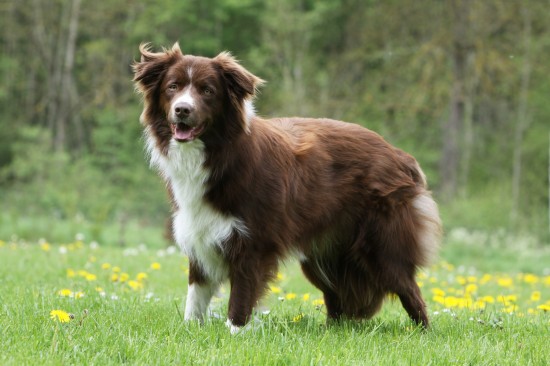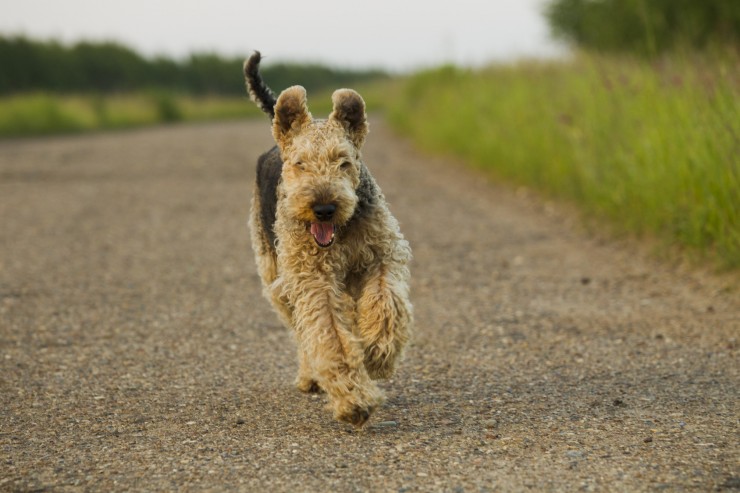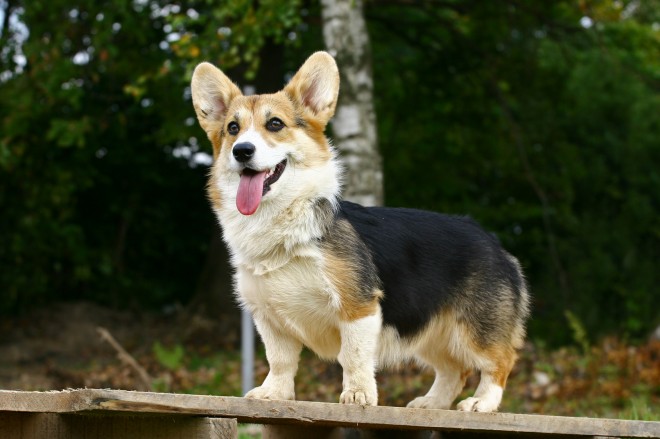

Some dog breeds are known for their strong instinct to hunt down prey but every domestic dog boasts having this drive and if the situation is right will take off chasing down what they consider to be their prey. Luckily, with most of our canine friends this is not really such a serious issue as long as they are taught this type of behaviour is not acceptable from a young age. This is just one of the reasons why early socialisation is so important because it allows owners to introduce their pets to other animals both large and small which pays dividends later on in a dog's life.
However, as previously mentioned there are certain breeds that have such a strong prey drive instinct that it is virtually impossible to stop them from taking off if the opportunity arises. This is why people should always carry out the necessary research on a dog's known character traits so they can make an informed decision on whether they would be the right canine friend to share a home with.
The drive to hunt down and chase prey is a genetically driven instinct that all dogs are born with and which our domestic dogs ancestors needed to hunt down food to survive. Modern day domesticated dogs still boast having the instinct to hunt although it is far less intense. The fact they are fed on a regularly basis by their owners also helps to a certain extent. However, even the most passive of dogs in the right situation can tap into their prey drive instinct which can then become a real problem.
Problems often happen if an inexperienced dog owner finds it hard to handle a strong natured dog. Some breeds can be difficult to control which means they end up becoming the alpha dog. First-time dog owners should ideally choose a dog that boasts a quiet personality and which is known to be a lot more passive by nature.
Most puppies will exhibit a prey drive which can typically be seen when they shake a toy from side to side or stare at something intently with their heads lowered slightly. Both of these behaviours are just part of a sequence which makes up a dog's prey drive. Good training and early socialisation helps harness this instinct in most domestic dog breeds but with some of them the instinct is so strong that owners have to be careful when they are out and about walking their dogs off a lead.
Some dogs cannot be let off a lead because their prey drive is so strong and this includes breeds like the Lurcher, a breed that does not need any external stimulus to take off after prey. Once a Lurcher goes off, all too often any commands an owner might give them will be ignored which is why these breeds are best owned by people who have a lot of experience in handling strong natured dogs. In the wrong hands, this type of dog could become a danger to people and other animals.
There are many dog breeds that boast a high prey drive and which are not the best choice for even the average dog owner. This includes the following breeds:
However, other breeds and even dogs that are crossed with a dog that boasts a high prey drive, are not a good choice for first-time dog owners either. Even if the dogs are given all the right training and early socialisation, this trait still remains strong and therefore could end up being a serious problem which in turn could make life very difficult for both the owner and the dog.
There are a few of the more common dog breeds namely terriers and lurcher/greyhound types which have inherited a strong prey drive and which owners should not encourage to hunt in order to avoid a serious problem developing which is all too easily done albeit by accident.
Owners with dogs that boast an extremely high prey drive should seek professional help if it becomes a real issue and the sooner this is done the better. The longer a dog is allowed to behave in this way, the harder the problem is to resolve. Unfortunately, in older dogs, this is one trait that is very hard to change which means owners need to keep their pets on leads when they are out walking and they need to be very careful when other pets or dogs are around. With this said, getting professional help may improve an older dog's behaviour to a certain extent so this is always a good route to take.
It is possible to harness a dog's prey drive and indeed many breeds boast superb working qualities based on their instinct to hunt. This includes many well known working dog breeds like the following:
In working dogs, a strong prey drive instinct is an essential part of their make-up which makes them so good at the jobs they are asked to do. However, for the average dog owner, sharing a home with a dog that boasts this sort of trait can become a real problem. First-time dog owners should stay away from any breed that is known for having a strong prey drive because through no fault of their own, these breeds are pretty high maintenance and need to handled with a firm and experienced hand throughout their lives with consistent and fair training.
 Aortic Thromboembolism In Cats
Aortic Thromboemb
Aortic Thromboembolism In Cats
Aortic Thromboemb
 Alternative Therapies For Dogs
Alternative Thera
Alternative Therapies For Dogs
Alternative Thera
 New Tick-borne Disease Babesiosis That All Dog Owners Should Be Aware Of
New Tick-borne Di
New Tick-borne Disease Babesiosis That All Dog Owners Should Be Aware Of
New Tick-borne Di
 Important Information For Dog Breeders On The 2016 Microchipping Regulations
Important Informa
Important Information For Dog Breeders On The 2016 Microchipping Regulations
Important Informa
 Pembroke Welsh Corgi Hereditary Health And Longevity
Pembroke Welsh Co
Pembroke Welsh Corgi Hereditary Health And Longevity
Pembroke Welsh Co
Copyright © 2005-2016 Pet Information All Rights Reserved
Contact us: www162date@outlook.com